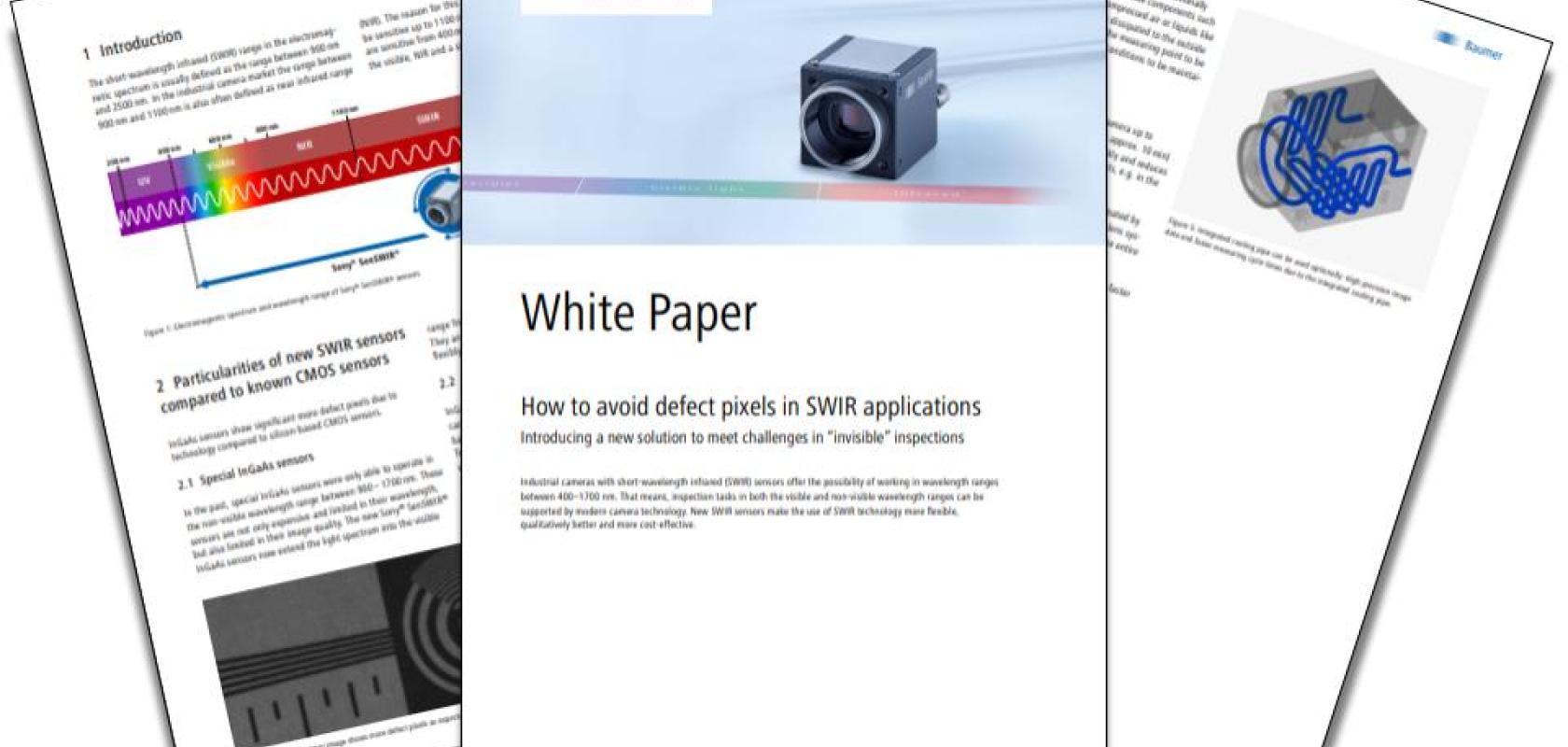How to avoid defect pixels in SWIR applications

How to avoid defect pixels in SWIR applications - A Baumer White Paper
Industrial cameras with short-wavelength infrared (SWIR) sensors offer the possibility of working in wavelength ranges between 400–1700nm. That means, inspection tasks in both the visible and non-visible wavelength ranges can be supported by modern camera technology. New SWIR sensors can make the use of SWIR technology more flexible, qualitatively better and more cost-effective.
Read the latest White Paper from Baumer to discover in greater detail how SWIR imaging goes beyond the visible spectrum, enabling machine vision to tackle challenging inspection tasks and unlock new possibilities for industrial automation.
Who should read this white paper?
This White Paper is ideal reading for professionals involved in quality assurance, industrial automation, and imaging technologies. Whether you are an engineer, a product manager, or a researcher working with short-wavelength infrared (SWIR) cameras, this document will provide the insights you need to optimise your imaging applications.
It's particularly relevant for those who seek to enhance inspection accuracy in invisible wavelength ranges, such as in semiconductor manufacturing, food inspection, and medical imaging.
This White Paper provides knowledge on how to:
- Enhance the reliability and precision of your SWIR imaging systems.
- Reduce the incidence of defect pixels through patented thermal design.
- Achieve superior image quality, even in challenging environments.
What does this White Paper contain?
Ares this White Paper covers include:
An introduction to SWIR technology: Understand the significance of the SWIR range in industrial applications and how new sensor technologies are expanding the possibilities.
Comparison of SWIR and CMOS sensors: Explore the challenges posed by InGaAs sensors in SWIR applications and how they differ from traditional CMOS sensors.
Defect pixel prevention and correction: Learn about Baumer's patented thermal housing design, integrated cooling solutions, and dynamic firmware correction techniques that together ensure the highest image quality.
Step-by-step guide to achieving optimal image quality: A practical, three-step approach to eliminating defect pixels and enhancing the overall performance of SWIR cameras.

